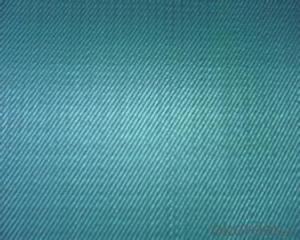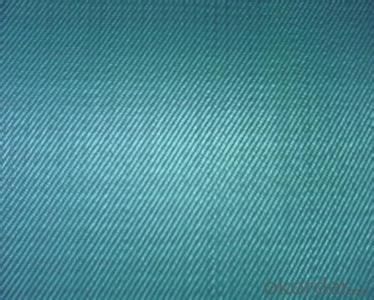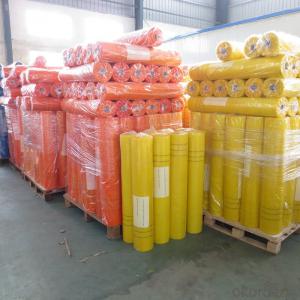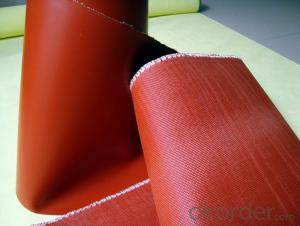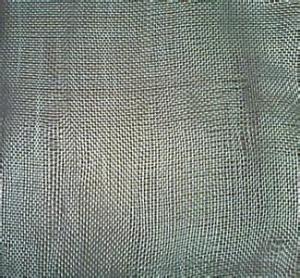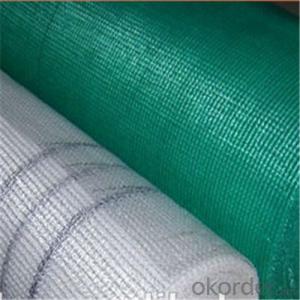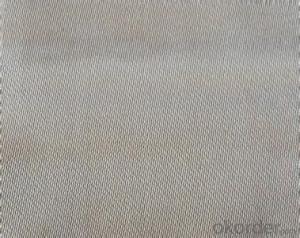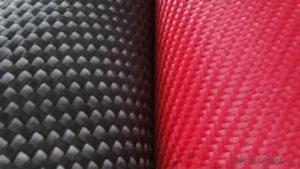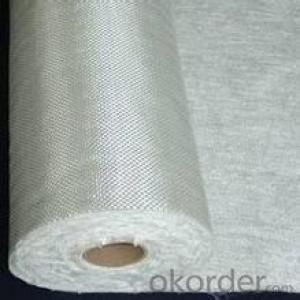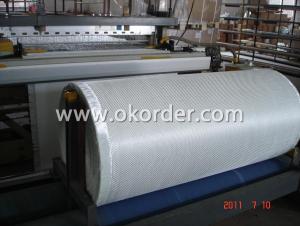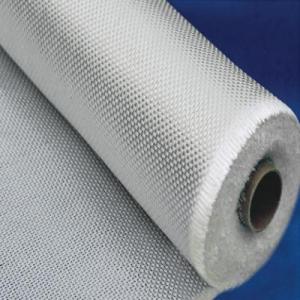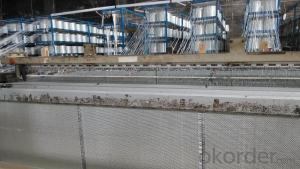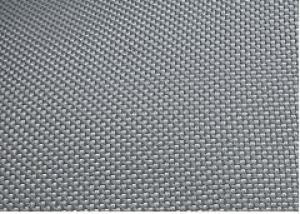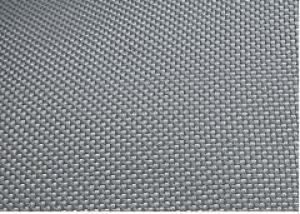Silica Electric Fiberglass Waterproofing Fabric Cloth
- Loading Port:
- China Main Port
- Payment Terms:
- TT OR LC
- Min Order Qty:
- -
- Supply Capability:
- -
OKorder Service Pledge
Quality Product, Order Online Tracking, Timely Delivery
OKorder Financial Service
Credit Rating, Credit Services, Credit Purchasing
You Might Also Like
Quick Details
| Place of Origin: | Brand Name: | Model Number: | |||
| Application: | Weight: | Width: | |||
| Mesh Size: | Weave Type: | Yarn Type: | |||
| Alkali Content: | Standing Temperature: | desity of warp: | |||
| desity of wefy: |
Packaging & Delivery
| Packaging Detail: | opp bag then carton box |
| Delivery Detail: | 15-20days after received deposit |
Specifications
1.temperature of fireproof:1770-2000
2.breaking strength:2100N/50NM
3.texture:plain weave
- Q: What are the different fiberglass fabric finishes for abrasion resistance?
- There are several different fiberglass fabric finishes that are specifically designed to enhance abrasion resistance. These finishes are applied to the fabric during the manufacturing process and serve to improve the fabric's durability and resistance to wear and tear. One commonly used fiberglass fabric finish for abrasion resistance is a silicone coating. This coating forms a protective layer on the fabric's surface, making it more resistant to abrasion and ensuring a longer lifespan. Silicone-coated fiberglass fabrics are often used in applications where high levels of abrasion are expected, such as conveyor belts and industrial curtains. Another popular finish for abrasion resistance is a PVC coating. This type of coating provides a strong barrier against friction and wear, making the fabric more resistant to tears, punctures, and other forms of damage. PVC-coated fiberglass fabrics are commonly used in applications such as protective clothing, tents, and covers for machinery and equipment. In addition to silicone and PVC coatings, there are also other finishes available for enhancing abrasion resistance in fiberglass fabrics. For example, some fabrics may be treated with a polyurethane coating, which provides similar benefits to silicone and PVC coatings. Other finishes may include chemical treatments or laminations that offer improved abrasion resistance. Ultimately, the choice of fiberglass fabric finish for abrasion resistance will depend on the specific application and the level of protection required. Manufacturers and users of fiberglass fabrics should carefully consider the intended use and the potential wear and tear that the fabric may encounter in order to select the most appropriate finish for their needs.
- Q: Can fiberglass fabric be used for ducting?
- Certainly! Fiberglass fabric is indeed suitable for ducting purposes. This lightweight and flexible material possesses outstanding insulation properties, making it an ideal choice. In the construction of air ducts, fiberglass is frequently utilized to regulate the system's temperature and airflow. It can either be wrapped around the ducts or used as a lining to achieve thermal insulation and hinder heat transfer. Furthermore, fiberglass has the added advantage of being resistant to moisture, mold, and mildew, making it perfect for ducting in humid environments. Nevertheless, it is crucial to emphasize that correct installation and sealing of fiberglass fabric are imperative to ensure optimal air quality and prevent loose fibers from infiltrating the duct system.
- Q: Can fiberglass fabric be used for making tablecloths?
- Fiberglass fabric is not typically used for making tablecloths. This type of fabric is known for its durability, strength, and heat resistance, making it more suitable for applications such as insulation, construction materials, or protective clothing. Tablecloths, on the other hand, are typically made from fabrics that are soft, lightweight, and easy to clean, such as cotton, linen, polyester, or blends of these materials. These fabrics provide a comfortable and aesthetically pleasing surface for dining and are better suited for tablecloth purposes.
- Q: What is the melting point of fiberglass fabric?
- The melting point of fiberglass fabric varies depending on the specific type and composition of the fabric. Generally, fiberglass fabric has a melting point ranging from 1000 to 1400 degrees Celsius (1832 to 2552 degrees Fahrenheit). However, it is important to note that fiberglass fabric typically starts to degrade and lose its structural integrity at temperatures well below its melting point. Therefore, it is recommended to avoid exposing fiberglass fabric to high temperatures to prevent any potential damage or safety hazards.
- Q: What are the different fiberglass fabric weaves for fire resistance?
- There are several fiberglass fabric weaves that offer fire resistance, including plain weave, twill weave, satin weave, and leno weave.
- Q: Can fiberglass fabric be used for making gaskets or seals?
- Yes, fiberglass fabric can be used for making gaskets or seals. Its high strength and heat resistance make it a suitable material for applications that require a tight seal, such as in automotive, aerospace, or industrial environments. Additionally, fiberglass fabric can be easily molded or cut to desired shapes, making it a versatile option for gasket and seal manufacturing.
- Q: Can fiberglass fabric be used for insulation in industrial equipment?
- Yes, fiberglass fabric can be used for insulation in industrial equipment. It offers excellent thermal insulation properties, is resistant to high temperatures, and has good durability and flexibility, making it suitable for various industrial applications.
- Q: Can fiberglass fabric be used for insulation in steam systems?
- No, fiberglass fabric is not suitable for insulation in steam systems as it does not have the necessary heat resistance to withstand high temperatures.
- Q: What are the weight options for fiberglass fabric?
- Fiberglass fabric, also known as glass fiber cloth, is available in a variety of weight options to suit different applications. The weight of fiberglass fabric is typically measured in ounces per square yard (oz/yd²) or grams per square meter (g/m²). The weight options for fiberglass fabric can range from as low as 0.5 oz/yd² (17 g/m²) to as high as 32 oz/yd² (1086 g/m²) or even more. The weight of fiberglass fabric determines its thickness, strength, and durability. Lighter weight fiberglass fabrics are often used for applications that require high flexibility and conformability, such as in the manufacturing of circuit boards or for reinforcing and repairing small parts. They are also commonly used in aviation and aerospace industries, where weight reduction is crucial. On the other hand, heavier weight fiberglass fabrics are typically used in applications that require higher strength and impact resistance. These can include boat building, automotive parts manufacturing, construction, and even in the production of bulletproof vests and armor. It is important to note that the weight of fiberglass fabric is just one factor to consider when choosing the right fabric for a specific application. Other factors like weave pattern, finish, and resin compatibility should also be taken into account to ensure optimal performance.
- Q: How is fiberglass fabric used in the production of protective suits?
- Due to its unique properties, fiberglass fabric is a commonly used material in the production of protective suits. It is highly effective in shielding individuals from hazardous environments and is known for its excellent heat resistance, making it ideal for industries like firefighting or metalworking where workers are exposed to high temperatures. In addition to its heat resistance, fiberglass fabric is also highly durable and provides exceptional tear and abrasion resistance. This makes it suitable for protective suits that need to withstand rough conditions and potential punctures, ensuring long-lasting protection. Its strength also improves the overall structural integrity of the suit, offering reliable defense against impacts or sharp objects. Furthermore, fiberglass fabric possesses excellent chemical resistance properties, making it suitable for protective suits used in industries involving hazardous chemicals or corrosive substances. It acts as a barrier, preventing harmful substances from penetrating the wearer's skin and reducing the risk of chemical burns or contact dermatitis. Moreover, fiberglass fabric is lightweight, allowing for greater comfort and ease of movement for the wearer. This is particularly important in professions that require agility and flexibility, such as emergency response teams or hazardous material handlers. Overall, the use of fiberglass fabric in the production of protective suits ensures a high level of protection against heat, tears, abrasion, chemicals, and other potential hazards. This versatile material offers a combination of durability, resistance, and comfort, making it an ideal choice for manufacturing protective suits that safeguard individuals working in various hazardous environments.
Send your message to us
Silica Electric Fiberglass Waterproofing Fabric Cloth
- Loading Port:
- China Main Port
- Payment Terms:
- TT OR LC
- Min Order Qty:
- -
- Supply Capability:
- -
OKorder Service Pledge
Quality Product, Order Online Tracking, Timely Delivery
OKorder Financial Service
Credit Rating, Credit Services, Credit Purchasing
Similar products
Hot products
Hot Searches
Related keywords
